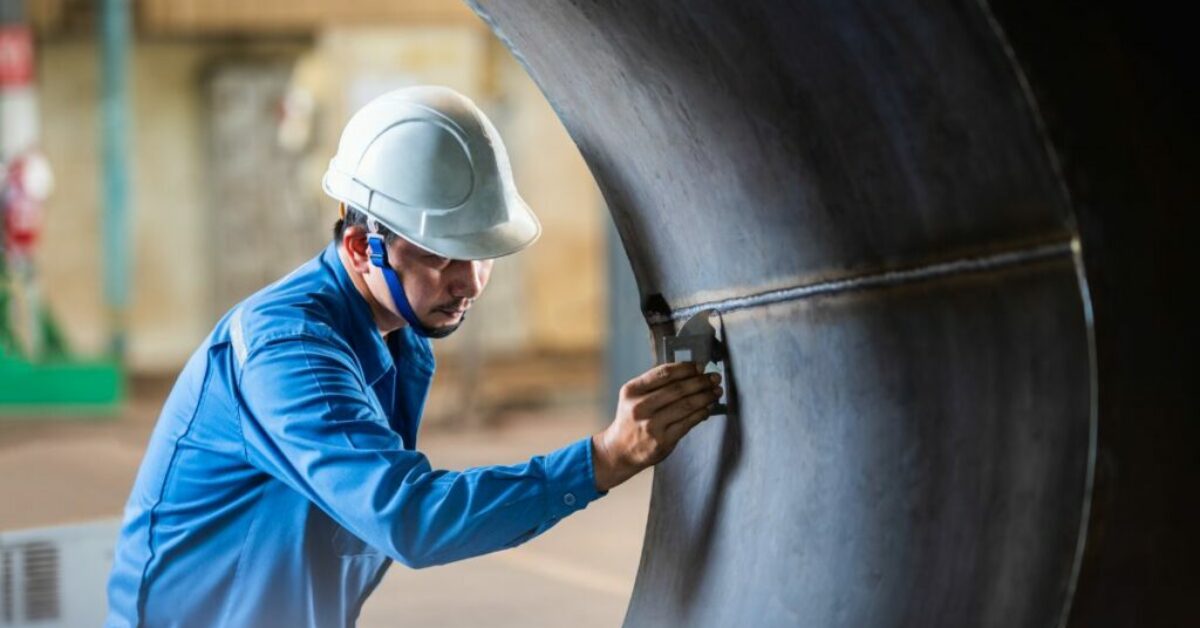A Comprehensive Overview to Welding Inspection Madison Requirements
A Comprehensive Overview to Welding Inspection Madison Requirements
Blog Article
Exploring Advanced Devices and Approaches for Accurate Welding Examination
In the world of welding examination, the quest of precision and reliability is paramount, spurring the growth of sophisticated devices and techniques. Technologies such as phased selection ultrasonic screening and electronic radiography are changing issue discovery, using unparalleled accuracy in defining welding defects. Laser scanning technologies and automated evaluation systems, furnished with artificial knowledge, are redefining the landscape by decreasing human mistake and improving safety actions. As these sophisticated techniques proceed to develop, they assure not only to change assessment practices yet also to elevate appealing questions regarding the future of quality guarantee in commercial applications.
Ultrasonic Testing Innovations
Ultrasonic testing advancements frequently stand for the center of advancements in welding inspection innovations. These innovations have significantly improved the capacity to identify and review stoppages within bonded frameworks, guaranteeing boosted integrity and safety.

Additionally, improvements in software program algorithms for information evaluation have enhanced the precision of issue detection and sizing. Automated ultrasonic testing systems currently offer high-resolution imaging, allowing in-depth assessments of weld high quality. These systems are usually integrated with sophisticated visualization tools, which assist in the analysis of outcomes.
Radiographic Inspection Methods
While ultrasonic screening technologies have set a high standard in non-destructive examination, radiographic assessment methods continue to play an important duty in welding examination by offering one-of-a-kind understandings into material integrity. Radiographic testing (RT) employs making use of X-rays or gamma rays to permeate materials, producing a radiograph that visually represents the interior structure of a weld. This imaging capability is indispensable for finding subsurface issues such as porosity, inclusions, and cracks that might not show up via surface area examinations.
The procedure includes putting a radiation source on one side of the weld and a detector on the opposite side. Variants in product density and density affect the attenuation of the rays, producing a contrasting photo that specifically defines problems. RT is especially beneficial for inspecting complicated geometries and thick sections where various other techniques may fail.
In spite of its effectiveness, radiographic inspection has to be performed with stringent adherence to safety methods as a result of the dangerous nature of ionizing radiation. In addition, the analysis of radiographs requires skilled workers, as the top quality of the evaluation straight impacts the integrity of the assessment. As a result, ongoing innovations in digital radiography are boosting photo clearness and analysis effectiveness, enhancing RT's important role in making certain weld quality.
Laser Scanning Developments
Embracing laser scanning technology in welding evaluation has reinvented the evaluation of weld high quality and stability. Unlike standard assessment methods, laser scanning supplies fast data purchase, substantially improving the effectiveness and accuracy of weld assessments.
Laser scanning advancements have brought about substantial renovations in identifying and finding surface defects such as porosity, lack of blend, and damages. The high-resolution data makes it possible for assessors to carry out extensive evaluations, making certain that welds satisfy stringent sector requirements. This method sustains the development of electronic records, facilitating lasting high quality assurance and traceability.
In addition, laser scanning innovation integrates effortlessly with software remedies developed for automated defect detection and assessment. The resultant data can be conveniently shared and official site evaluated, advertising collective decision-making procedures. As industries proceed to require higher requirements for weld quality, laser scanning stays at the center, providing unmatched precision and performance in welding inspection.
Automated Assessment Solutions

Automated evaluation systems provide the advantage of uniformity, getting rid of human error and subjectivity from the evaluation process. They are designed to run in various environments, from production floorings to remote field websites, making certain extensive protection. Welding Inspection Madison. These systems can be configured to abide by particular welding standards and requirements, providing detailed reports and documentation for quality assurance purposes
Furthermore, the combination of cloud-based systems helps with the storage and evaluation of substantial amounts of evaluation information. This enables pattern evaluation and predictive maintenance, allowing manufacturers to resolve potential concerns before they rise. The fostering of automated assessment systems is a pivotal move in the direction of improving the integrity and efficiency of welding processes in commercial applications.
Enhancing Safety and Effectiveness
A substantial facet of enhancing safety and effectiveness in welding examination hinges on the assimilation of ingenious modern technologies Recommended Reading that enhance operations and minimize dangers. The fostering of innovative non-destructive testing (NDT) approaches, such as ultrasonic screening, phased selection ultrasonic screening (PAUT), and radiographic screening, plays a critical duty in ensuring architectural honesty without jeopardizing the security of the workers entailed. These strategies enable for detailed evaluations with minimal downtime, minimizing potential threats connected with typical methods.
Furthermore, the implementation of real-time information analytics and device discovering algorithms has changed the means inspection information is interpreted. By using anticipating analytics, possible issues can be recognized prior to they show up right into vital failings, making certain prompt interventions and maintenance. This aggressive technique substantially improves operational efficiency and safety and security in welding processes.
Additionally, remote evaluation modern technologies, including drones and robotic spiders equipped with high-resolution cams, allow assessors to assess hard-to-reach areas without exposing them to hazardous conditions. This not just improves assessment precision however also lessens human threat. By leveraging these innovative tools and techniques, markets can attain higher security criteria and functional efficiency, ultimately causing more lasting and trustworthy welding inspection practices.
Conclusion
The combination of advanced devices and approaches in welding assessment considerably boosts issue detection and ensures architectural integrity. These advancements not just enhance inspection effectiveness however also add to enhanced safety and top quality assurance in commercial welding applications.

Ultrasonic screening developments regularly stand for the center of developments in welding examination innovations.While ultrasonic screening innovations have actually established a high standard in non-destructive assessment, radiographic examination techniques proceed to play an integral role in welding assessment by offering distinct understandings right into product integrity.Accepting laser scanning modern technology in welding inspection has reinvented the analysis of weld quality and stability. As markets proceed to require greater standards for weld quality, laser scanning stays at the leading edge, supplying unparalleled precision and efficiency in welding evaluation.
Automated assessment systems use the benefit of consistency, eliminating human error and subjectivity from the inspection process.
Report this page